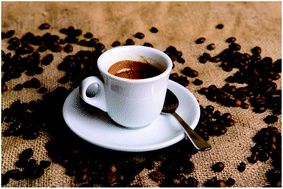Our referees have awarded the following Food & Function papers ‘HOT’ article status. Please take a look, let us know your thoughts and remember – these are free to access until Thursday 21st August 2014.
Variations in caffeine and chlorogenic acid contents of coffees: what are we drinking?
Iziar A. Ludwig, Pedro Mena, Luca Calani, Concepción Cid, Daniele Del Rio, Michael E. J. Lean and Alan Crozier
Food Funct., 2014, 5, 1718-1726
DOI: 10.1039/C4FO00290C
Resveratrol prevents cigarette smoke induced keratinocytes damage
Claudia Sticozzi, Franco Cervellati, Ximena Maria Muresan, Carlo Cervellati and Gisueppe Valacchi
Food Funct., 2014, Accepted Manuscript
DOI: 10.1039/C4FO00407H
Bioavailability and metabolism of hydroxycinnamates in rats fed with durum wheat aleurone fractions
Luca Calani, Fayçal Ounnas, Patricia Salen, Christine Demeilliers, Letizia Bresciani, Francesca Scazzina, Furio Brighenti, Camilla Melegari, Alan Crozier, Michel de Lorgeril and Daniele Del Rio
Food Funct., 2014, 5, 1738-1746
DOI: 10.1039/C4FO00328D













